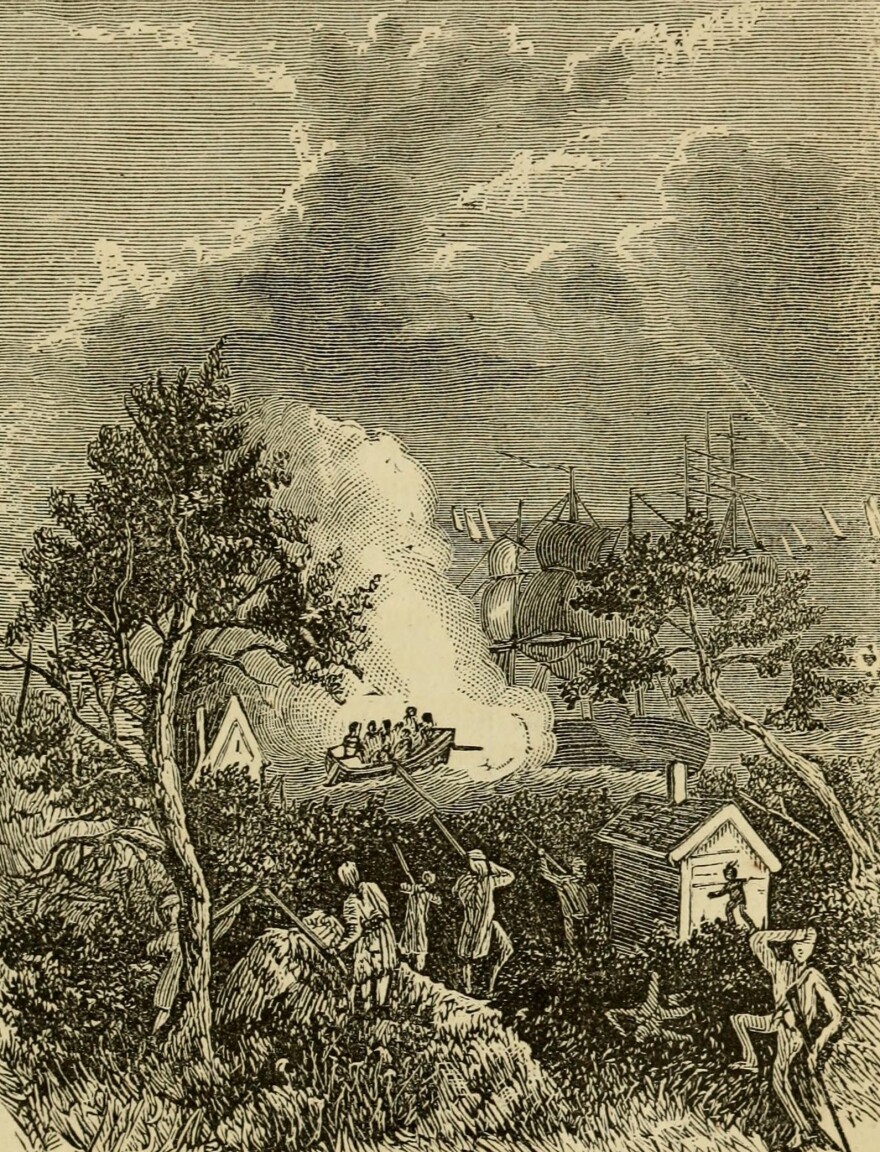Conversations on the prelude to the American Revolution are often carried by well-known hallmarks in U.S. history: The Battle of Bunker Hill; Lexington and Concord; Paul Revere’s ride.
But revolutionary sentiment and organizing took root early in Virginia as well, making the then-colony the location of the first fighting outside of New England in the Battle of Hampton.
A Hampton History Museum exhibit, opening Saturday, tells the tale of the Oct. 26-27, 1775, battle and life in the city during the war through the words, experiences and decisions of 24 people who lived it. The exhibit also gives visitors an opportunity to get hands-on with era-accurate replicas of artifacts found in Hampton.
Historian Beth Austin says sharing history in this way is engaging and a reminder that “history is made, it doesn’t just happen.”
“It’s people’s choices that determine the outcome,” Austin said.
Just like today, Hampton was strongly connected to maritime culture and industry in the 18th century. While not as large a port as Norfolk, it was strategically powerful. Hampton was home to the district’s royal customs house, which collected duties and fees from ships sailing through ports from Jamestown to the southside.
“Some of the earliest Revolutionary leaders in Hampton were the people who were charged with enforcing and collecting those duties,” Austin said.
One of them was Wilson Miles Cary, the district customs collector whose story is included in the exhibit. As merchants and militia members took advantage of Hampton’s positioning to block British merchants from landing in the bay, Cary refused the royal governor’s orders to relocate the customs house to Norfolk.
“It’s the actions of the merchants and the sailors from Hampton in really aggressively enforcing and blocking all this British trade that leads to the tensions that escalate into the Battle of Hampton,” Austin said.

It wasn’t just outrage and disruptions over new taxes or changing trade policies that led to the battle, Austin said. Gov. John Murray, Lord Dunmore, in April 1775, threatened to free enslaved Black people and burn down the capital of Williamsburg. Colonial Virginians feared an insurrection and were enraged by escaping enslaved people being aided by British sailors.
Joseph Harris is one man in the exhibit who chose to aid British forces. An enslaved harbor pilot, Harris had been acting as an informant before escaping. As demands for his and other escapees’ return went unmet, tensions between Hampton patriots and royal forces increased until boiling over.
“I really do think there’s a calculus going on for enslaved people during this period, weighing their opportunities” and whether “the ideals of the revolution were going to play out and apply also to enslaved people,” Austin said.
Murray would proclaim freedom for “indented” servants and enslaved people who took up arms for the crown two weeks after the battle. Scholars estimate up to 100,000 enslaved people fled captivity to join the British during the Revolution. Many also fought for the patriot side, with some being returned to enslavement, such as Cesar Tarrant. He was later freed by the General Assembly.
“That’s really what the Revolutionary story is; it’s the story of people navigating this really tumultuous time in a way that they believed would secure their own liberty,” Austin said. “For enslaved people, for merchants or for customs officials, those sets of choices are going to look very different.”


